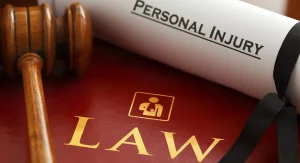Blended Families, Blended Laws: Understanding Family Law in Modern Times
By TOI Staff
February 27, 2024
Update on : February 27, 2024

The traditional family is changing, blended families formed from second marriages are steadily growing. With these revolutionary changes in family dynamics new law issues arise; in this summary of some aspects of family law today we deal with them and relate some of the decisions that judges have handed down. The content of this article is meant for those dealing with such changes at home, so we touch on the sticking points to look for and advise you how to navigate them.
Blended Families: The Rise and the Need for Legal Awareness
Blended families are all around us-three out of every five marriages are a second marriage. According to the U.S. Census Bureau, 16% of children under the age of 18 live in blended-family households. This growth necessitates a deeper understanding of how the law applies to these families. The very survival of these blended families, where both members and also children should be protected by law, calls for a careful legal analysis.
Key Areas of Family Law in Blended Families:
1. Child Custody and Visitation:
When it comes to parents, it is often said that the best interests of the child come first. Courts in determining legal and physical custody, or “planning everyday things” for your children, will consider the child’s relationship with each parent, stability of the living environment, and caregiving abilities of parents equally. But who will be the better of these two? After all, each has their own merits and flaws so one or another has never come out ahead in any test.
2. Child Support:
Economic Responsibility: Child support, including mortgage insurance and public insurance payments, is generally kept the responsibility of natural parents by legal procedures. Child support calculations consider various factors such as income, parenting time, and living arrangements.
Stepparent Role in Child Support: Stepparents are not ordinarily required to pay child support; however, if liked they may take on the financial burden of children for their own.
3. Estate Planning and Inheritance:
Protecting Your Loved Ones: There are some special challenges for blended families in estate planning. People must consider the distribution of personal property and whether their children’s future will be secure no matter what blood they have. If your loved ones are to be secure, wills, trusts, and defined beneficiaries are all key defensive weapons.
Second Marriage Problems: anyone in a second marriage ought to carefully examine their current family structure and update their past estate plans so that their kids from a previous marriage are not left in unexpected difficulties.
Building a Harmonious Blended Family: Legal Considerations and Beyond
Yet building any successful blended family goes beyond law; legal considerations aside. Here are several additional suggestions that will help foster peace:
Open Communication: Open communication and candor among family should always be encouraged, including the children. No matter what your age, you get more out of life by expressing your real feelings.
Respecting Individuality: Before and after divorce, consider the individual needs and preferences of every member of the family–including natural and unnatural people who you call parents or offspring.
Building Relationships: Good relationships between stepparents and stepchildren are important. If we encourage people to spend time together and have shared experiences, we can help them sense belonging among different groups.
Seeking Professional Guidance: family therapy or mediation often provides tools to solve communication difficulties and make the separation of interests and relationships within the family easier.
Conclusion: Embracing Blended Families with Legal Insight and Compassion
It is essential to have a solid understanding of the law, like good communication skills. On the other hand, having a supportive community for a mixed family is also very beneficial. Aunts, uncles, cousins, friends, neighbors–all may help in providing moral support or practical assistance. Such care networks can alleviate stress and provide a place to belong for all the individuals in them. They offer valuable support systems for dealing with the challenges unique to blended family life.
In the end, society must change its mindset to accept blended families. It is important to make people aware that gradually increasing numbers of families are adopting these arrangements. Society itself can do a lot to assist blended families as well, and safeguard the wellbeing of people in them. This might take the shape of promoting policies and resources suitable for blending families–for example, family counseling services accessible to the public, or flexible employment arrangements adjusted to accommodate the life schedules of blending families.
For all members of the family, big or small, Finally by recognizing and acting upon it. We may live peacefully in a world where pride and prejudice have no power–where cooperation nurtures kindness, and sharing laughter sustains us all. With a positive attitude towards the legal issues, keeping communication in the open, conducting human relationships well, seeking help from experts like Sydney’s leading family lawyers, Prime Lawyers and bringing a community together in support of life–these steps can help blended families. It is our hope and will to create such an environment for all members of a blended family: A cradle to rear healthy individuals. Only then will society become more even-tempered in outlook and equipped to cope with whatever comes its way.















